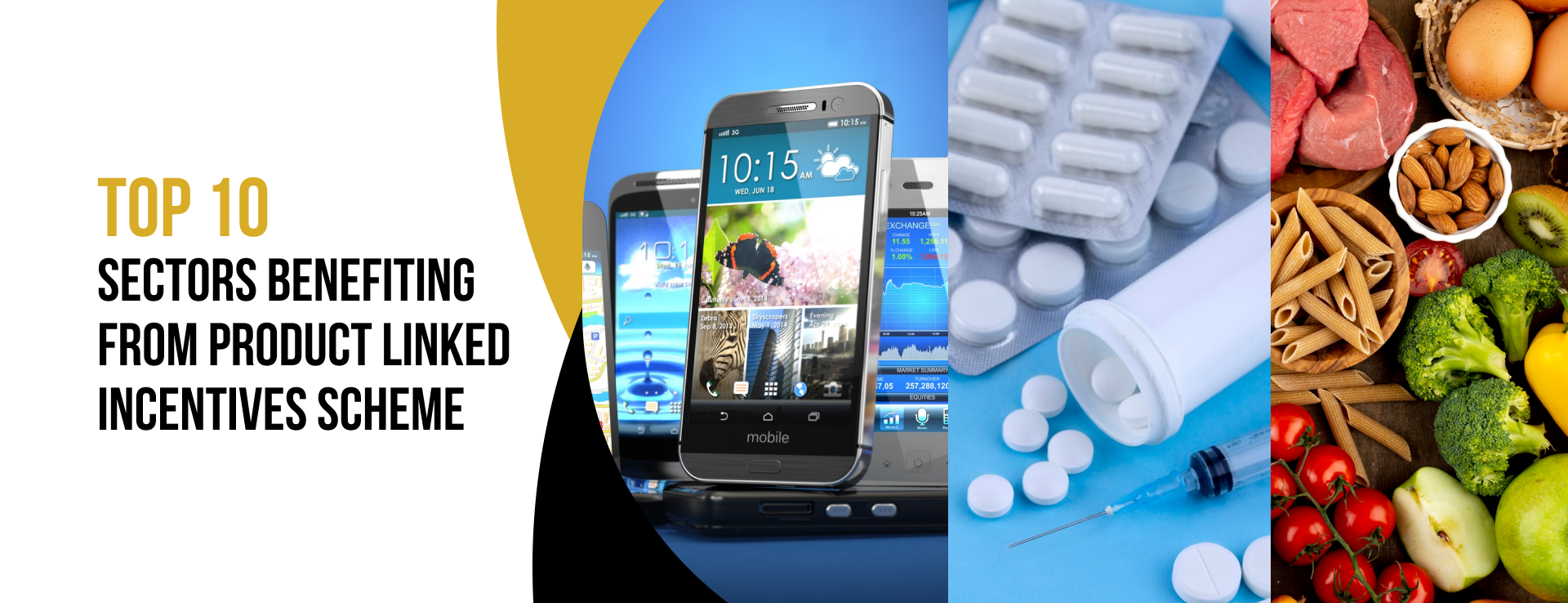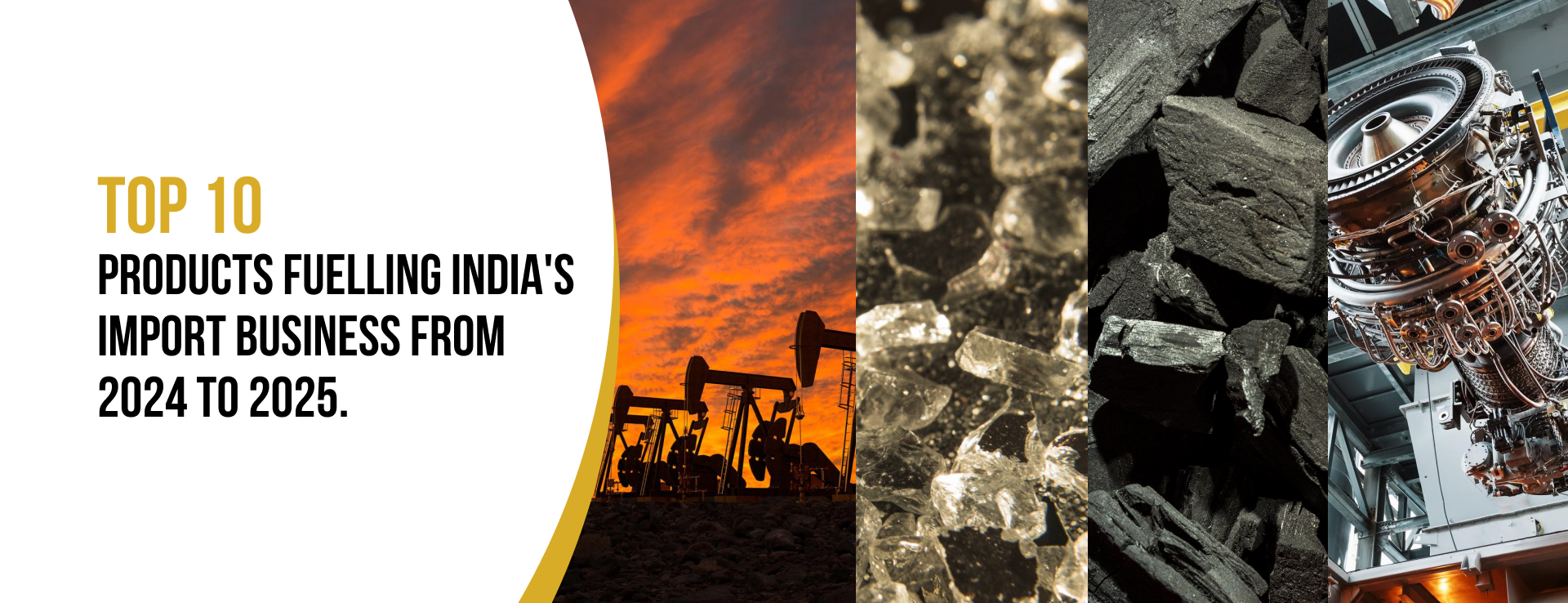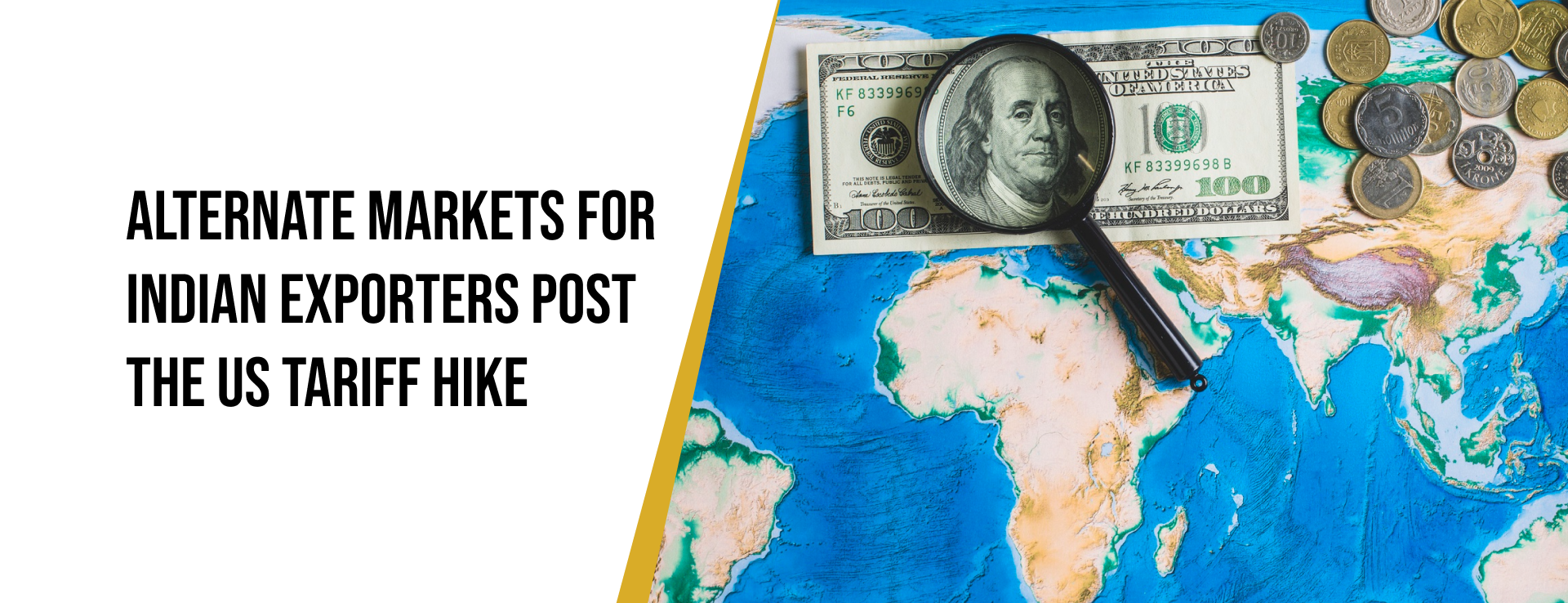
Top 10 sectors benefiting from Product Linked Incentives Scheme
Key Highlights
-
A comprehensive overview of top 10 sectors benefitting from the Production Linked Incentive scheme.
-
Trade initiatives post the America tariff hike on 4th July.
-
Top sectors benefitting from the Production Linked Incentive scheme include electronic components, active pharmaceutical ingredients, automobiles, speciality steel, white goods, etc.
-
As per India Export data India’s total exports for FY 2024-25 have reached $283,739.12 million.
In recent years the Indian government has launched multiple measures to boost Indian trade at local and global levels. The initiatives include trade incentives, digital transformation, infrastructure development, trade-supporting policies, etc.
In recent years the Indian government has launched multiple measures to boost Indian local and global trade. The initiatives include trade incentives, digital transformation, infrastructure development, trade-supporting policies, etc.
Post the hike of US tariffs on India, trade imbalance, and the Indian government has acted swiftly by working on global trade initiatives, promoting Indian exports globally and negotiating the terms with the US. The government is incentivising the Indian manufacturers for increasing the production and sale of goods. On the other hand, they have planned on a budget of 20,000 crore to market the Indian products globally.
Top 10 sectors benefiting from the Production Linked Incentives Scheme:
|
Sr. No |
Products |
Exports in USD |
|
1 |
Mobile Manufacturing &Specified Electronic Components |
17,209,573,438 |
|
2. |
Critical Key Starting Materials/Drug Intermediaries & Active Pharmaceutical Ingredients |
689,883,314 |
|
3. |
Manufacturing of Medical Devices |
813,926,094 |
|
4. |
Automobiles and Auto Components |
4,017,727,735 |
|
5. |
Pharmaceuticals Drugs |
29,847,431 |
|
6. |
Speciality Steel |
55,220,639 |
|
7. |
Telecom & Networking Products |
17,209,573,438 |
|
8. |
Electronic/ Technology Products |
502,383,071 |
|
9. |
White Goods (ACs and LEDs) |
413,801,278 |
|
10. |
Food Products |
7,485,791,119 |
1. Mobile Manufacturing & Specified Electronic Components
Large-scale manufacturing of electronic goods receives incentives in proportion to the increase in the production quantity. The government provides a 4-6% incentive calculated on the increase in sales of electronic goods from the base year.
2. Automobiles and Auto Component
The government in India provides incentives to the automobiles and auto component to increase the production at the local level to receive international investments. The scheme focuses on creating a robust supply chain by producing Advanced Automotive Technology (AAT) products.
3. Pharmaceutical Drugs
The Indian PLI scheme provides financial aid to pharmaceutical companies based on their sales in the past 6 years. With a budget of 15,000 crore, they aim to increase the sales, cut down external dependency on drugs, and secure a prominent place in pharmaceutical exports.
4. Food Products
The food product list includes ready to cook/ ready to eat (RTC/ RTE) foods, processed fruits & vegetables, marine products, mozzarella cheese along with innovative/ organic products of SMEs, including free range -eggs, poultry meat, egg products. The scheme is to boost food production, increase off-farm employment, and market Indian food products globally.
5. Textile Products (MMF) segment & technical textiles
The PLI scheme aims to boost the local production, and sale of man-made fibre apparels, man-made fibre fabrics and technical textile products through sale-based incentives. The scheme has 2 eligibility criteria. As per the first criterion the manufacturer should have a minimum investment of 300 crore with an annual turnover of 600 crore. While the second category requires the company to have an investment of 100 crore along with a minimum turnover of 200 crore.
6. High-Efficiency Solar PV Modules
The Indian government had provided a budget of 24,000 crore to the manufacturers to produce high- efficiency solar PV modules. The incentive aims at boosting the production and sale of solar PV modules, aligning with the “Atmanirbhar Bharat” initiative to make India self-reliant. The support also aims at boosting employment opportunities.
7. Advanced Chemistry Cell Battery Manufacturing
The PLI scheme aims to build a robust production ecosystem of Advanced Chemistry Cell Batteries (ACC), reducing India’s dependency on imports and increasing job opportunities. The scheme is administered by the Ministry of Heavy Industries (MHI) and incentivises the establishment of 50 GWh of ACC producing capacity and an additional 5 GWh for niche ACC technologies.
8. AC & LED Lights
The Indian government provides financial aid to the companies that manufacture ACs, and LED lights. The scheme aims to increase local products to cut down imports and to increase employment in this sector. The eligible companies are incentivised in proportion to the quantity of incremental sales.
9. Speciality Steel
The Speciality Steel PLI scheme was launched a few years ago to boost the production of quality Steel at the national level, create a space for Indian steel in the global trade, attract investments, reduce external dependency, and increase job opportunities.
10. Telecom & Networking Products
The PLI scheme incentivises the companies producing specified telecom and networking products. The incentives range from 4 to7% and are based on incremental sales of these products. The initiative aims towards increasing employment along with self-reliance.
Impact of the Export Promotion Mission on PLI key sectors.
The Indian government has recently announced its plan to launch a 20,000 crore Export Promotion mission in September 2025. India’s Export Promotion Mission is the initiative of the government to market the Indian products globally. The PLI scheme is known for catalysing the manufacturing industry. The Export Promotion Mission is an add-on initiative and is expected to amplify India's exports globally. The sales are predicted to increase through global marketing and recognition.
In a Nutshell
As an emerging economy, India facilitates its traders with multiple initiatives and support policies like the Foreign Trade Policy (FTP), the Market Access Initiative (MAI), and the Freight Equalisation policy, etc. Additionally, the recent hike in US tariffs in India has led to further expansion of the global trade network by tying up with multiple partners.
The Production Linked Incentive has been a success in increasing the manufacturing and sale capacity of the Indian manufacturers, while the Export Promotion Mission provides a way forward for the marketing and recognition of the products globally. Together, the initiatives aim towards increasing India's exports and creating employment opportunities while building self-reliance through a robust manufacturing ecosystem.
Frequently Asked Questions (FAQs)
1. What is the Export Brand Promotion strategy in India?
It is an initiative led by India Brand Equity Foundation (IBEF) promote and gain recognition for “Brand India” and “Make in India” globally through digital campaigns, trade fairs and branding. It aims at increasing India’s export share in global trade.
2. What are the benefits of Export Brand Promotion?
The Export Brand Promotion will create global recognition, build authenticity and increase Idia’s Exports.
3. What the Production Linked Incentive scheme eligibility?
The companies need to meet sector specific, minimum investment and incremental sales requirements.
4. What are the Production Linked Incentive sectors?
The PLI sectors include automobiles, aviation, food, organic chemicals, white goods, food, pharmaceuticals etc.
5. What is the benefit of Production Linked Incentive scheme for food processing sector? The PLI food sector includes ready to cook, ready to eat, processed fruits vegetables, cheese etc. The benefits are also extended to SME innovators and organic producers. The manufacturers are liable for up to 50% reimbursement on internation branding.
Recent Blogs

Top 10 Products Fueling India's Import Business - 2024 to 2025.
Learn about the top 10 products imported in India that fuel the import business List of top Indian buyers driving Indias major imports and their sellers

Alternate Markets for Indian Exporters Post the US Tariff Hike
Discover alternative countries for Indian exporters post the US tariff hike A guide to find new buyers and export from India across different nations

Top 10 Human Hair Exporters In India - 2024 to 2025
Discover top 10 companies fuelling human hair export in India List of countries engaging in human hair import along with hair exporters and their market share


